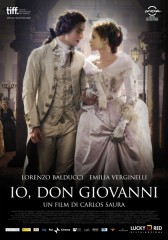Basically, I am trying to create a game of lace-wars intrigue that will be complex enough to play in its own right, but also serve to create skirmish-type scenarios for the table-top. I mostly see the "intrigue phase" as a precursor to a true military "campaign phase:" something that can be played while I await my armies, but also hopefully something that will be fun all by itself . To a limited extent, the intrigue phase might continue through the military campaign, though if a full-fledged "War of the Estrian Succession" does break out, there will be much less scope for the subtlety and the secrecy of the intrigue phase.
I am still struggling with ways to achieve this. I would like the intrigue aspect of the game to be based on letters between characters, and to "feel" like an 18th century epistolary novel (most obviously,
les Liaisons dangereuses), where not only is the plot revealed through correspondence, but the letters themselves are a part of the story. Players would communicate with their agents at least in part through letters, agents would exert their influence on other characters in part through letters, and report back to the players through letters. But every letter carries a risk. Interception of letters is how secrets may be learned. Publication of letters is how characters' reputations may be destroyed, or at least their influence diminished.

At the same time, I would like the plot to emerge, not through my own deliberate design, but through players acting strategically. That means creating enough complexity that players will have an enormous range of options, but at the same time, I do not want to spend hours resolving character interactions every game turn. That in turn means I am looking at a computer-aided system. Theoretically, a true computer game would do the job quite well, and I have browsed around looking at free game engines online. Unfortunately, I have no idea how to make a game engine do what I want it to do, and in any case, I do still want to be able to move everything to a tabletop when appropriate.
Anyway, the basic plan is a three-cornered struggle between the Grand Dukes, played out through various agents. Each Duke would begin with a small number of agents assigned at random.
So far, the campaign npc characters (all of whom are potential agents) number 114, most consisting of Electors and their their families (spouses, mothers and adult offspring). There are also a number of other influential or useful characters, including some from the lesser (non-electoral) nobility, three ambassadors (French, Prussian and Austrian, though some Imagi-Nation ambassadors would add flavour to this mix!) and two "outlaw" characters useful for the dirtier jobs (an Adriatic pirate and a highwayman).
All characters have a variety of skills and weaknesses. I used a random number formula in Excel to assign random values from 0-6 to 15 character attributes for 200 unnamed characters. A little like Tony Bath with Hyboria, except that he used playing cards, and, as I recall, he discounted seemingly contradictory character traits? Maybe I am wrong about that, it's been a long time since I read the accounts of his campaign. In any case, I have found that accepting and reconciling the contradictions actually leads to more complex characters. Now I only have to match up the 114 named characters with the data rows on the Excel table.
Once that is done, characters will be ready to serve as either agents for the Grand Dukes, or as the targets of their machinations. Or both. And that requires defining what actions agents may take against each ofther, and how these are to be resolved. More formulas. I have already started creating these in Excel, so that once you input an agent character, an agent action, and a target character, the spreadsheet itself will plug in the character traits and calculate the results at each stage. I have no doubt this would work better with a relational database like MS Access, but I find Access intimidating. Wish me luck.




